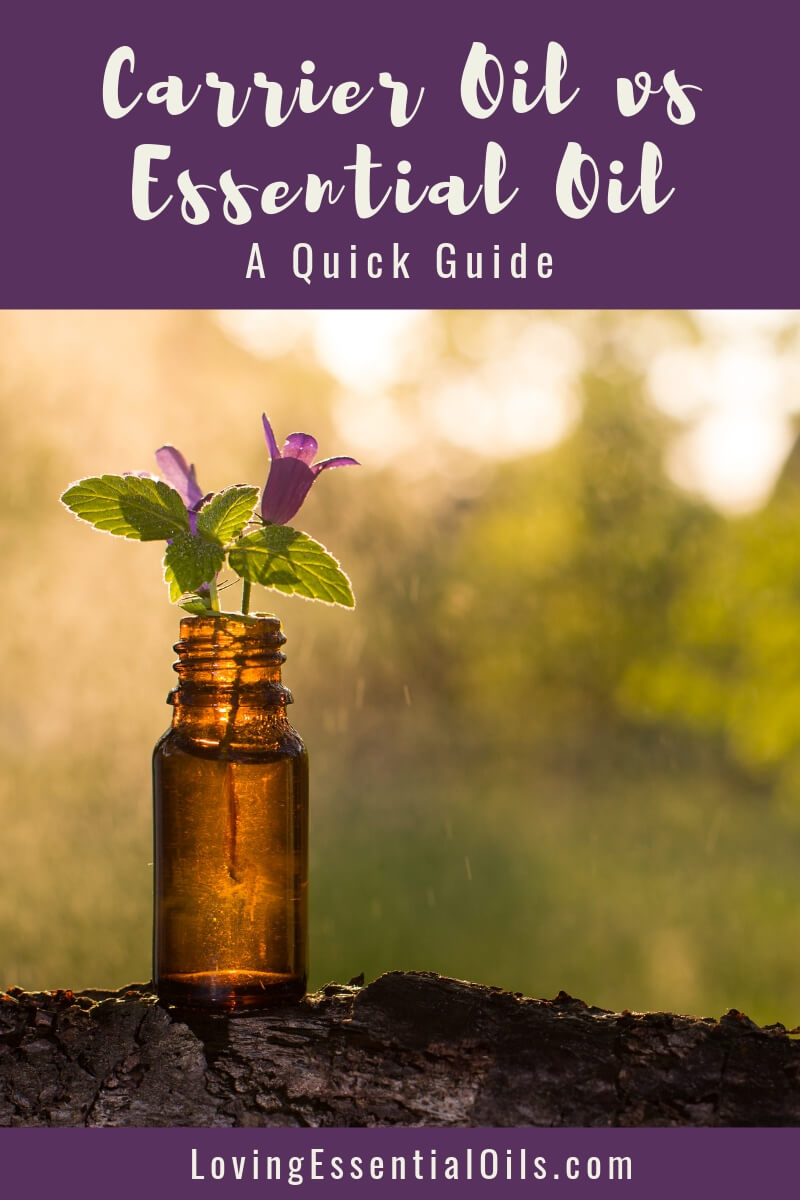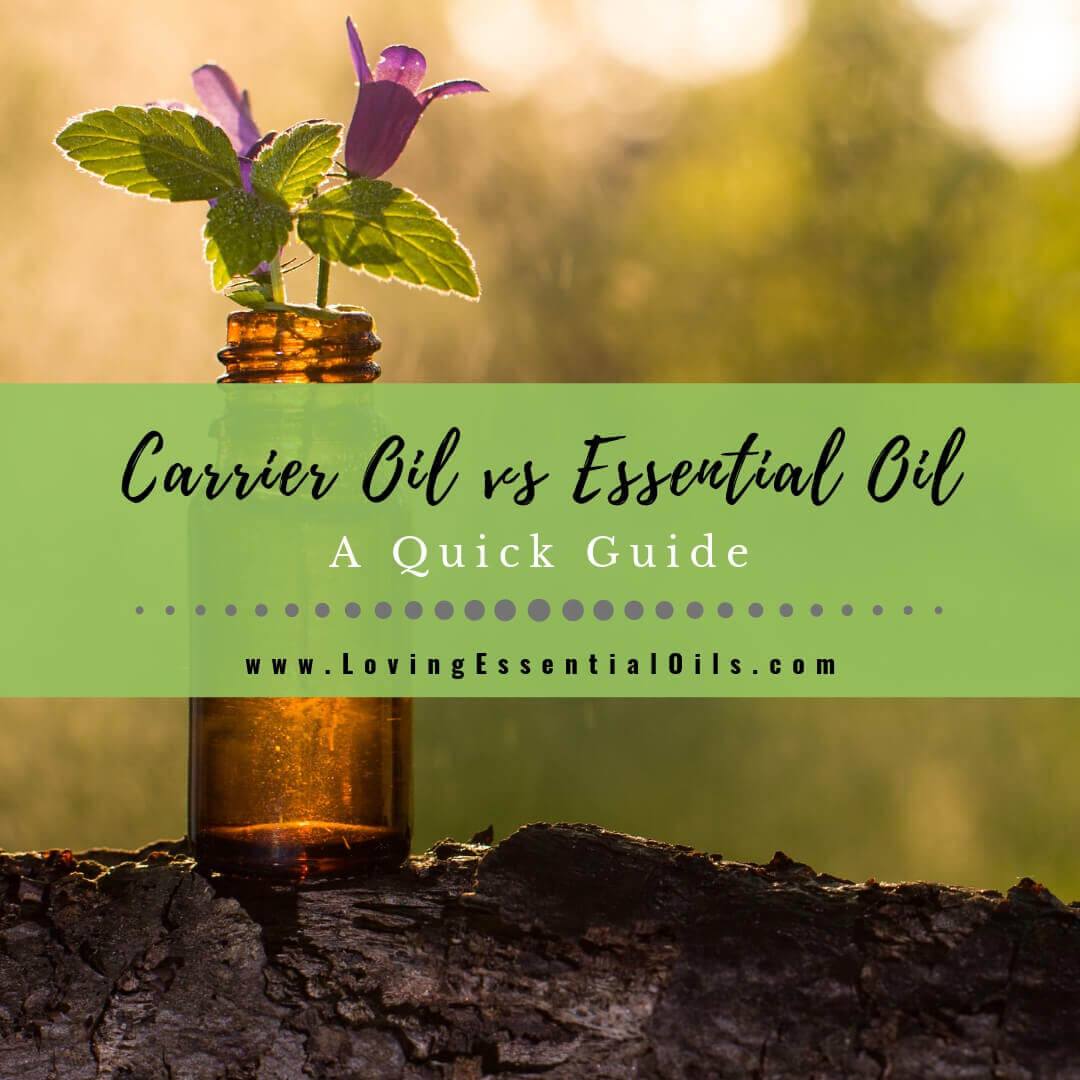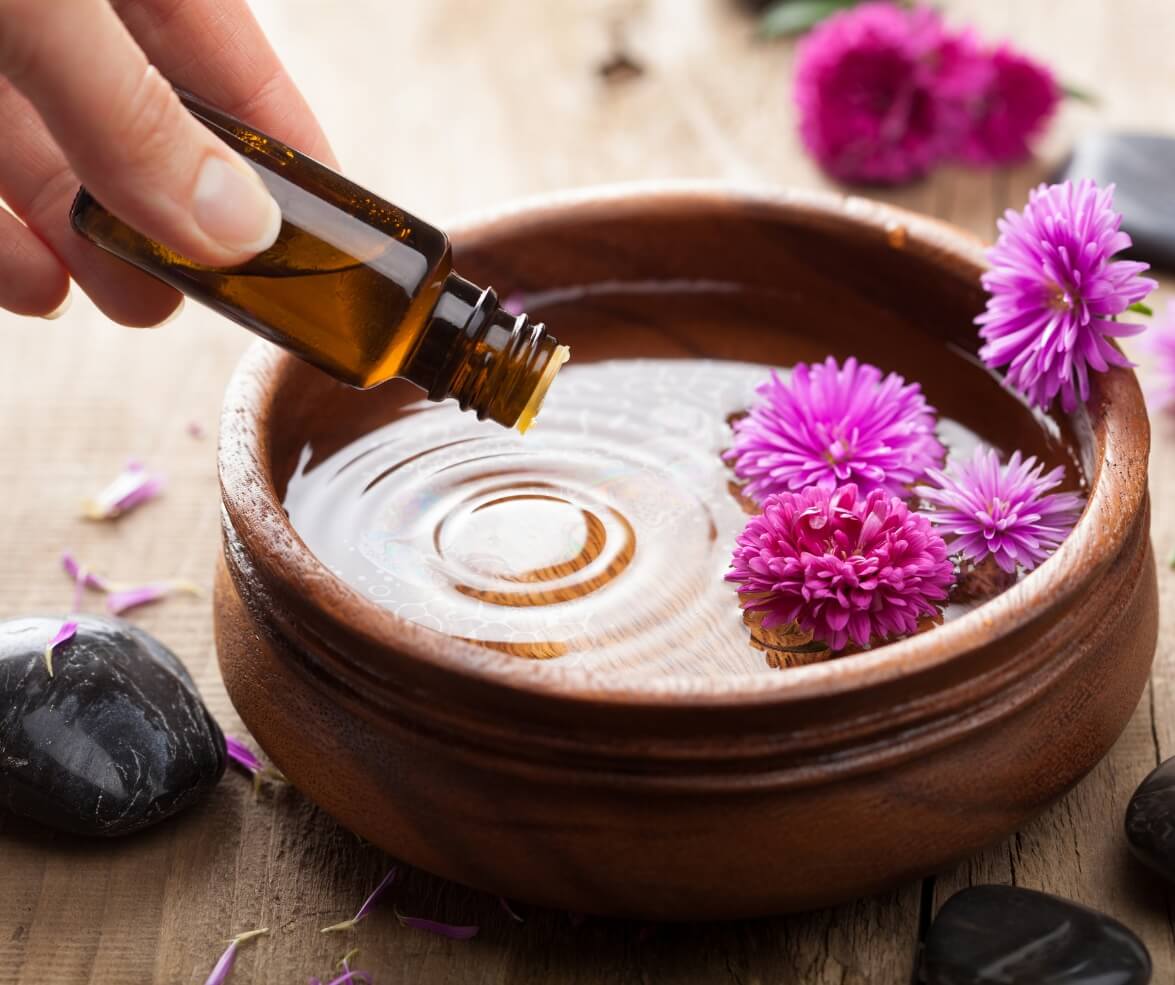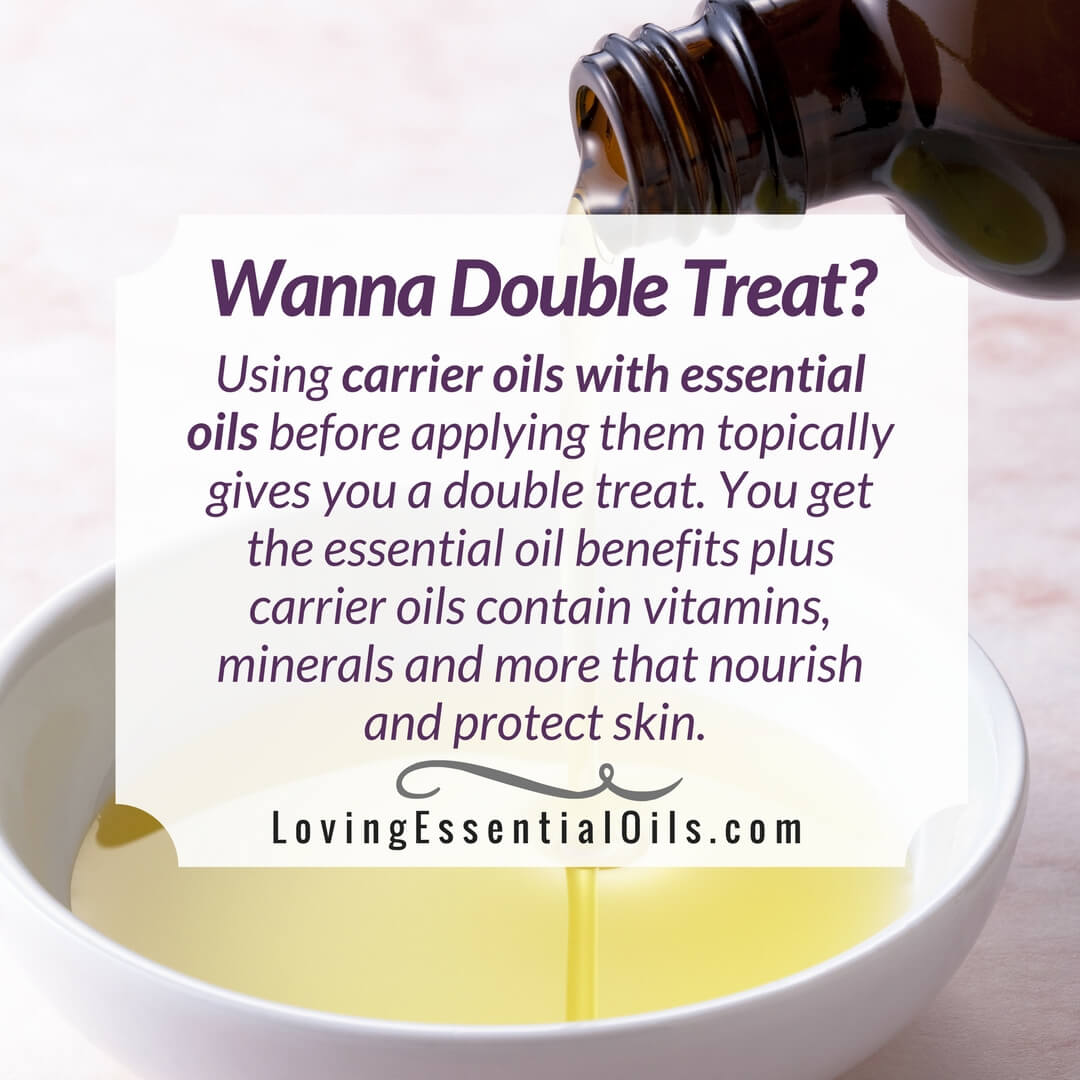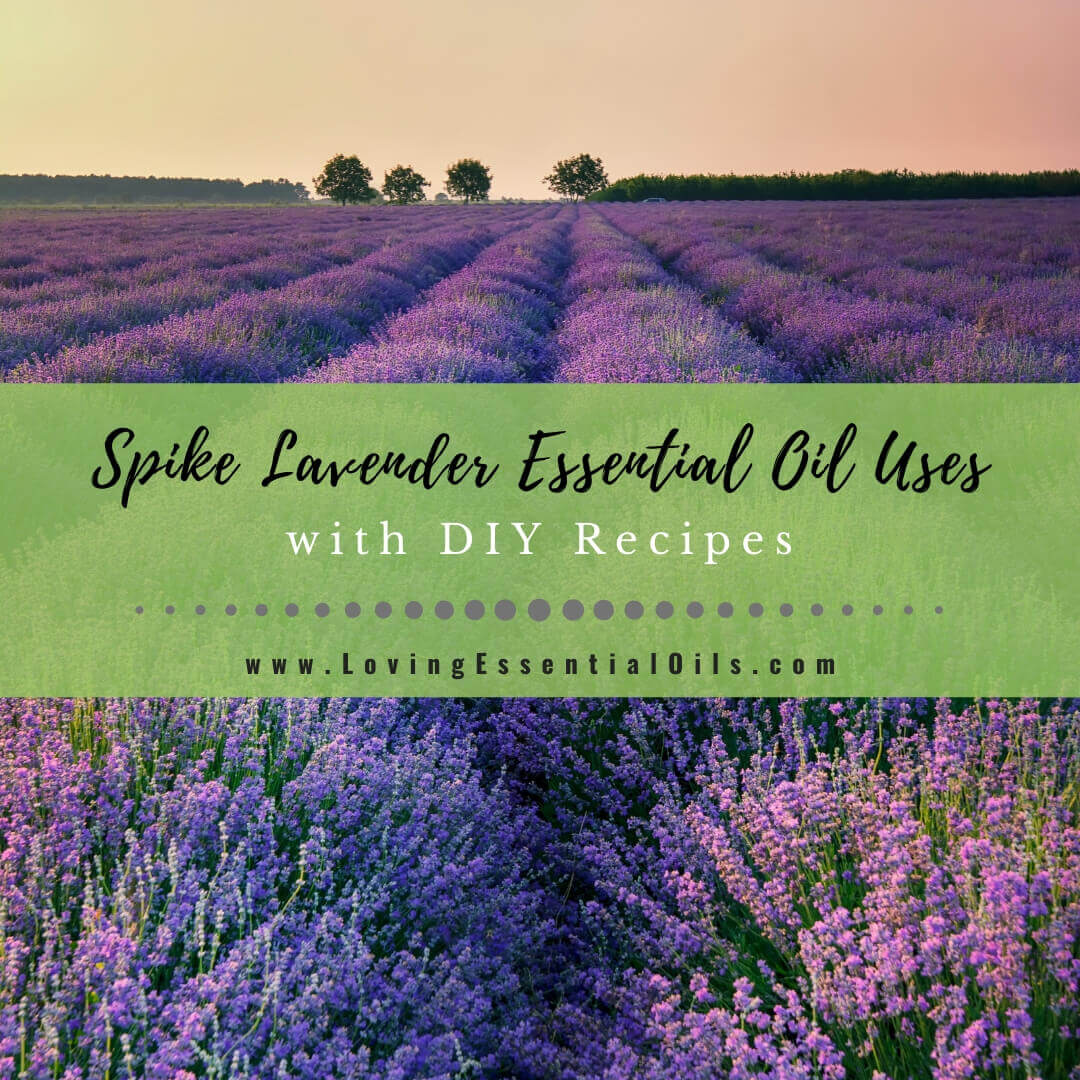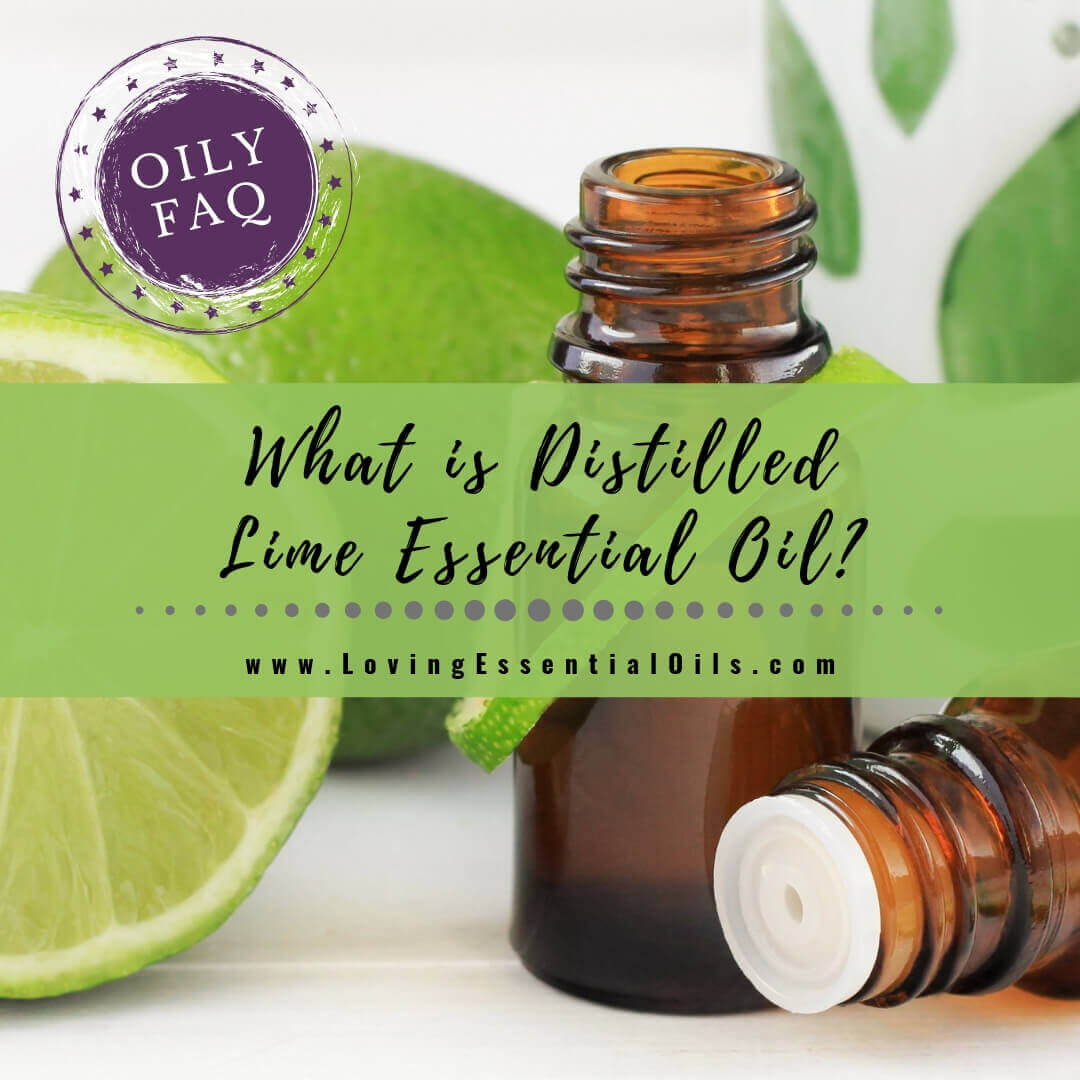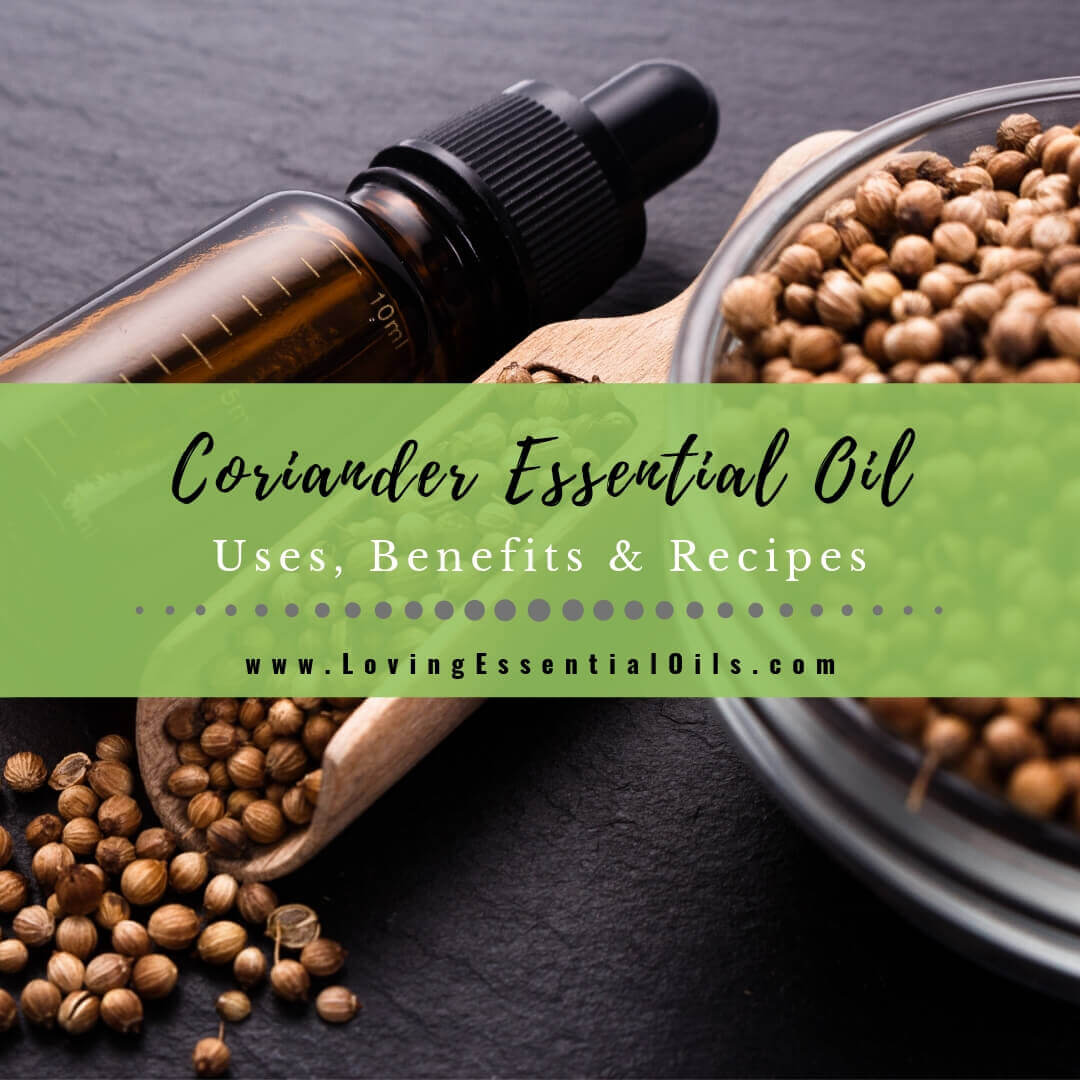Carrier Oil vs Essential Oil - What's the difference? When it comes to the world of oils, there’s a lot of confusion surrounding the difference between essential oils and carrier oils. In short, carrier oils are the base oils used in aromatherapy, while essential oils are the pure, concentrated extracts of plants.
When you hear the words "essential oil," what comes to mind? Chances are, you think of aromatherapy and healthy living. But what is an essential oil, anyway? And what's the difference between an essential oil and a carrier oil?
The popularity of essential oils has led to an increased interest in carrier oils. In this post I share their similarities and differences, as well as how they can BOTH benefit your health and wellness.
What is a Carrier Oil?
Carrier oils are used in aromatherapy as a base to dilute essential oils before they are applied topically to the skin. They help "carry" the essential oils onto the skin. They are also used to make aromatherapy blends and DIY essential oil recipes.
Carrier oils have beneficial properties of their own. Some people use carrier oils as a moisturizer for the skin.
What is an Essential Oil?
Essential oils are concentrated plant extracts that contain the desired therapeutic properties of the plants from which they're derived. Essential oils contain a higher percentage of aromatic compounds than carrier oils, that is why they smell so wonderful.
Essential oils are also more potent, which means that a smaller amount is needed for therapeutic purposes and why they should be diluted before application to the skin.
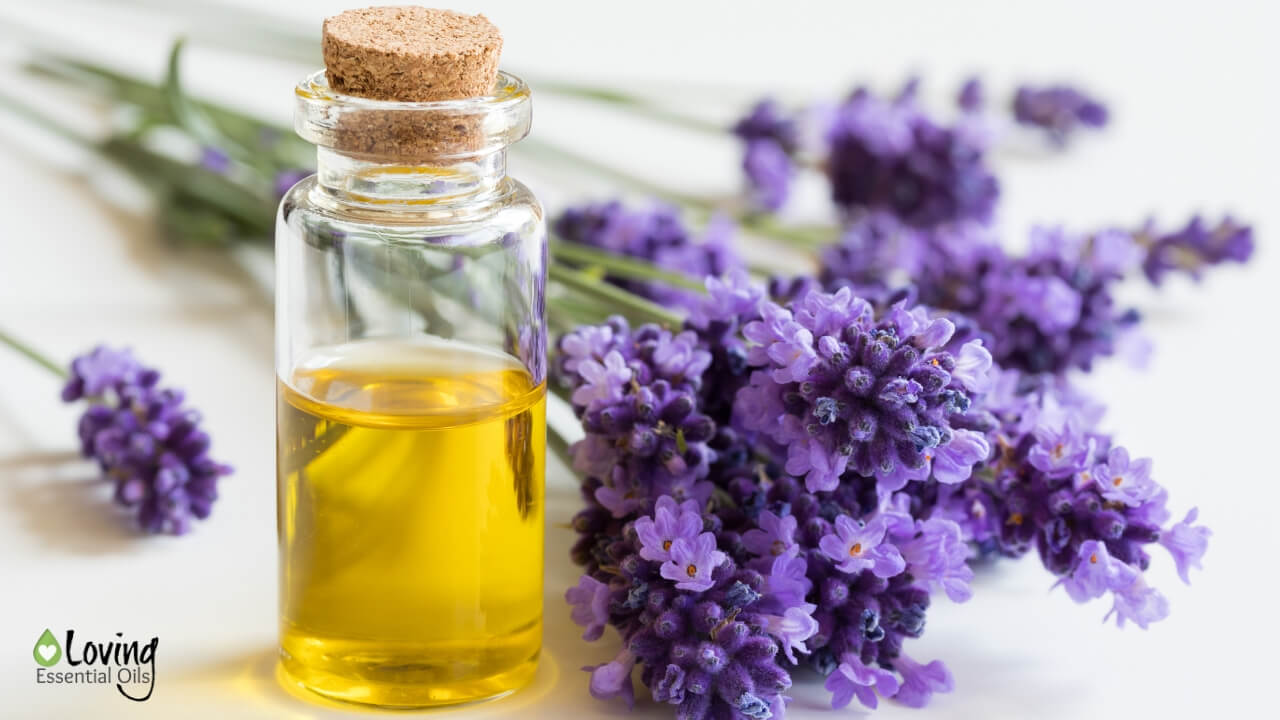
Carrier Oil vs Essential Oil - What's the Difference?
Carrier oils and essential oils are two types of oils commonly used in aromatherapy, massage therapy, and skincare.
- Carrier oils are typically vegetable or nut oils that are used to dilute essential oils and carry them onto the skin.
- Essential oils, on the other hand, are highly concentrated plant extracts that are used for their therapeutic properties.
This comparison chart provides a quick reference guide to the differences between carrier oils and essential oils, including their uses, benefits, and potential side effects.
Carrier Oil vs Essential Oil Comparison Chart
Here is a chart to highlight the differences between carrier oils and essential oils:
Carrier Oils |
Essential Oils |
| Natural oils made from the fatty part of a plant, usually from the seeds, nuts, or kernels | Concentrated oils made from a variety of plant and tree parts, like leaves, roots, flowers, seeds, bark, wood, resin, and fruit |
| Most common extraction method is cold pressed | Most common extraction method is steam distillation (citrus oils are usually cold pressed) |
| Fixed oils; they don't evaporate | Volatile oils; they evaporate quickly |
| Can apply liberally to the skin as is (no dilution needed), or can be used as a base to dilute essential oils | Too strong to apply to the skin, should be diluted in a carrier oil before applying topically to the skin |
| Bland, little to no aroma | Highly aromatic |
| They nourish and moisturize the skin, as well as protect it | They offer therapeutic properties and unique aromatherapy benefits |
The term "carrier" can also refer to any substance used to dilute essential oils. These commonly include creams, unscented lotions, butters, and aloe vera gel. So, the next time you’re wondering about the difference between carrier oils and essential oils, now you know!
What are Some Examples of Carrier Oils?
Carrier oils are created from a wide variety of plant sources including nuts, seeds and vegetables. There are many different types of carrier oils that can be used with or without your essential oils.
Carrier oils can be used with essential oils to dilute them, making them less potent and safer to use on the skin. They also help the essential oils to be better absorbed by the skin.
Skin is your body's largest organ so it is important to keep it healthy. The nourishing and moisturizing properties of carrier oils can help you accomplish this.
Here are a few favorite carrier oils:
Each of these carrier oils has its own unique properties and benefits. Click on the links above to learn more about what each has to offer.
What are Some Examples of Essential Oils?
There are many essential oils, the two most popular are lavender oil and peppermint oil. Here are some more examples of essential oils:
- Patchouli essential oil
- Lemongrass essential oil
- Tangerine essential oil
- Sweet Marjoram essential oil
What are the Benefits of Using Carrier Oils with Essential Oils?
When using essential oils, it is best to use the smallest amount of drops necessary to achieve the desired benefits. Diluting them with a carrier oil helps achieve this without lessening the effect of the essential oil.
In fact, using them together actually saves money, prevents wasting precious oils and allows more time for the essential oil to absorb into the skin. It also makes the essential oil application process easier because you can cover a larger area. Read more about carrier oil and essential oils.
Using Essential Oils and Carrier Oils for Natural Skin Care
Achieving great skin doesn't have to be complicated or expensive. In fact, with the power of essential oils and carrier oils, you can create your own personalized skin care blends that not only smell great but also have therapeutic effects.
Essential oils are widely used in natural medicine and are known for their skin rejuvenating properties. Some of the most commonly used essential oils in skin care include:
- Helichrysum
- Lavender
- Rosemary
- Frankincense
- Palmarosa
- Tea tree oil
- Carrot Seed
These oils are chosen for their ability to reduce inflammation, increase circulation, regenerate tired skin, and provide gentle cleansing and antiseptic properties. When using essential oils in skin care, it's important to dilute them in carrier or base oils.
Commonly used skin care carrier oils include Hazelnut oil, Rosehip seed oil, and Evening Primrose oil. These oils not only help your skin absorb the essential oils but also provide essential fatty acids and vitamin compounds for optimal skin health.
Creating your own aromatherapy skin care blends is not only fun and rewarding but also effective and affordable. With a little research and experimentation, you can find the perfect combination of oils that will keep your skin looking and feeling great.
Blending Carrier Oils and Essential Oils Together
When it comes to creating the perfect blend for your skin or aromatherapy needs, there are a few key steps to follow to ensure that you are getting the most out of your oils.
Here's a breakdown of how to blend carrier oils and essential oils together:
1. Choose your carrier oil
Carrier oils are used to dilute essential oils, making them safe to use on the skin. Some popular options include sweet almond oil, coconut oil, jojoba oil, and grapeseed oil.
2. Determine your desired scent
Essential oils are what give your blend its unique aroma. Choose oils that complement each other and fit your intended use. For example, lavender and chamomile are great for relaxation, while peppermint and eucalyptus are invigorating.
3. Measure your oils
For a 2% dilution (which is recommended for most uses), add 12 drops of essential oil per ounce of carrier oil. If you want a stronger scent, you can increase the amount of essential oil, but be sure to test it on a small patch of skin first.
4. Mix your oils
Add your carrier oil to a clean glass bottle, then add your essential oils. Shake well to combine, and store in a cool, dark place until ready to use.
Remember, essential oils are potent and should be used with care. Always do a patch test before using on your skin, and consult with a healthcare professional if you have any concerns.
With these simple steps, you'll be on your way to creating your own custom blends in no time!
Frequently Asked Questions
How do you choose an essential oil?
When choosing an essential oil, it is important to consider the purpose and intended use of the oil, as well as its quality and purity. It is also important to research any potential side effects or contraindications before use.
It is recommended to purchase oils from reputable sources and consult with a healthcare professional if unsure.
What are the benefits of using carrier oil?
Carrier oils have numerous benefits for the skin. They help to dilute essential oils and make them safe to use topically, while also providing nourishment and hydration to the skin.
Carrier oils also help to improve absorption of essential oils, allowing them to penetrate deeper into the skin and provide therapeutic benefits.
Additionally, carrier oils can be used on their own as a moisturizer or massage oil, providing a range of benefits for the skin, hair, and overall well-being.
How do you choose a carrier oil?
When choosing a carrier oil, consider your skin type, the intended use of the oil, and the benefits offered by the oil. You may also want to consider the scent and texture of the oil.
Some popular carrier oils include jojoba oil, coconut oil, almond oil, and grapeseed oil. It's important to choose a high-quality, pure oil that is appropriate for your intended use.
How to Improve Carrier Oil Shelf Life?
To preserve your carrier oils shelf life, store your carrier oils in a cool dark place away from direct sunlight or heat sources like radiators or fireplaces. Also, make sure to close any bottles tightly with the lids secure so air doesn't get in which will cause oxidation and spoilage to occur faster.
Conclusion on Carrier Oils vs Essential Oils
Carrier oils are oils that are used to dilute essential oils before application to the skin. They are usually plant-based oils, such as coconut oil, olive oil, jojoba oil, or almond oil, and are chosen for their skin-nourishing properties. They can be used alone or in combination with other oils.
Essential oils are concentrated, aromatic extracts from plants that are highly concentrated. They should be diluted first with a carrier oil before applying on the skin. Some of the most popular essential oils include lavender, peppermint, and eucalyptus.
Share on Pinterest
